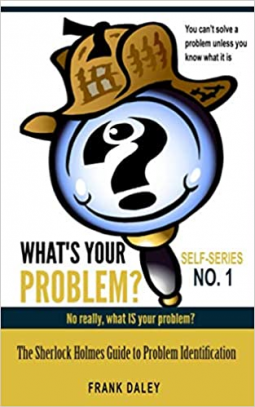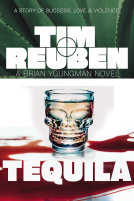
What's Your Problem? No, Really, What IS Your Problem?
Problem Identification: The First Step in Problem-Solving (Self-Series)
by Frank Daley
This title was previously available on NetGalley and is now archived.
Send NetGalley books directly to your Kindle or Kindle app
1
To read on a Kindle or Kindle app, please add kindle@netgalley.com as an approved email address to receive files in your Amazon account. Click here for step-by-step instructions.
2
Also find your Kindle email address within your Amazon account, and enter it here.
Pub Date Apr 19 2020 | Archive Date May 28 2020
Talking about this book? Use #WhatsYourProblemNoReallyWhatISYourProblem #NetGalley. More hashtag tips!
Description
What’s Your Problem?
No, Really, What IS Your Problem?
The Sherlock Holmes Guide to Problem Identification.
Have you ever tried to solve a problem and you simply “can’t” do it?
You’re smart but you can’t figure out how to fix it?
Do you feel like calling Sherlock Holmes?
Stop trying to solve a problem when you don’t even know what it is.
THE 1ST STEP IN PROBLEM SOLVING: IDENTIFY THE PROBLEM!
Sherlock Holmes does this by dismissing all wrong-headed ideas. He knows when his mind or emotions are playing tricks on him.
What's Your Problem? does the same thing.
Eliminates all the dead ends and roadblocks to a solution. It clarifies what you must know BEFORE you try to solve the problem. What you think, feel, or guess the problem is, is not going to help.
You can do this in 30 minutes or less.
This step-by-step guide lets you “see” and solve your problem.
It shows you:
• How to find emotional blocks that stop you from identifying the real problem
• How to “see” hidden psychological biases that prevent problem identification
• How to correct poor thinking habits that camouflage the real problems
It shows you how to identify real problems before you try to fix phantom problems.
Stop wasting time trying to solve the wrong problems.
Be like Sherlock. Identify the real problem.
Then you can solve it.
Advance Praise
“Cuts through ‘psych’ mazes that stop us from "seeing" the real problem.”
“Direct and logical. Connected the dots for me. I nearly fell off my chair!”
“There it was, right in front of me. This book is a brilliant light for me.”
“Daley provides a simple method to identify the problem that stops you from acting in your own best interests… an easy, step-by-step Socratic approach to knowing yourself.”
Available Editions
| ISBN | 9780987835246 |
| PRICE | $4.99 (USD) |
Links
Average rating from 9 members
Featured Reviews
This is a short book that breaks down 3 ways to figure out why you can't move past a problem. The solution is to identify the problem. It's a very short book, and I hope, will come with a very small price tag. It's information that is told in a friendly format, almost child like, and for me, because I've read many books like it, I'd give it 3 stars. As a bookseller, I'd give it 5 for someone just entering the self help arena or someone that needs a fast, simple, easy to understand solution.
 Hal P, Bookseller
Hal P, Bookseller
Excellent and gets right to the point. There is no filler. It gives a very quick explanation on how to solve problems.
 Gayle G, Reviewer
Gayle G, Reviewer
As a Teacher, I often use a variety of strategies for solving problems. I found this book very helpful in giving readers a simple approach to breaking down their issues. The author Frank Daley uses a well-known character, Sherlock Holmes, to create a response in readers (literary device), because Holmes is a problem-solver. Actually he uses inductive and deductive reasoning; however, Mr. Daley keeps it simple and crystal clear.
Mr. Daley is an expert at examining the self, and as a result, he is able to explain the main idea, which is identifying the problem correctly ( often issues are mis-identified ) using 1 simple exercise! After he explains the 3 main categories, which are mental (thinking), emotional (feelings ), and psychological (underlying reasons/causes). Readers can create a chart, columns A, B, C, in which they breakdown the issue in order to correctly IDENTIFY the problem. By pinpointing which column, A,B, or C, we view our problem from another perspective or viewpoint. This, IN EFFECT, results in solving the issue because we can come up with multiple solutions, as a consequence of thinking through the reasons behind the problem. Next, Daley uses universal examples which are simple and concise to reinforce his argument. Overall, he uses a conversational tone which leads to clarity for the major concepts of his discussion.
One suggestion, it would be easy to create a few simple visuals to enhance Daley's central claim, and to illustrate the 1 simple exercise. If you're looking to mentor students, or if you're a parent, you could use this book as a tool to connect to teenagers, or even middle grades students.
I found this book very appealing for many audiences and I highly recommend it. It can be the start of a series using the Sherlock Holmes iconic character, and Daley did mention in the notes following the book, he plans on breaking down a much larger manuscript into several parts.


















